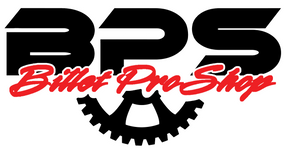☎ 1-855-260-7007
Anti-Squat Explained: Perfecting Your Radial Racing Setup
What is Anti-Squat and Why Does It Matter?
Anti-squat percentage is a critical factor in drag racing, especially with radial tires. It determines how effectively the rear suspension transfers weight to the rear tires during a launch, directly impacting traction and consistency. A properly tuned anti-squat setup ensures maximum grip while minimizing wheel hop.
The Importance of Proper Vehicle Scaling
Scaling your car is essential to achieving the right balance for radial racing. Proper front-to-rear and side-to-side weight distribution improves stability, handling, and traction off the line. For radial tire cars, we have found that a front weight distribution of 58-60% provides excellent results, offering consistent traction and stability without excessive wheelies.
Before scaling, we ensure tire pressures are set correctly to maintain consistency in the setup. We also evaluate and adjust ride heights to balance weight distribution and ensure proper suspension geometry. Anti-roll bar preload is fine-tuned to minimize body roll and ensure equal traction on both rear tires during launch. These steps are critical to achieving a stable and predictable race car.
Factors to Consider for Suspension Performance
Understanding how upper bar length impacts suspension response speed is crucial. Shorter upper bars react more quickly but may reduce stability, while longer bars provide smoother transitions. Quality shocks, such as Menscer Shocks, are indispensable for managing suspension movement effectively.
As an authorized dealer, Billet Pro Shop can provide custom-tailored Menscer Shocks to suit your specific needs, ensuring your setup is optimized for track conditions.
When setting your anti-squat percentage, it’s important to consider the car’s power level and intended use. As a general starting point:
- Up to 700HP: Aim for an anti-squat percentage between 120-140%.
- 700-1200HP: Aim for an anti-squat percentage around 140-160%.
- 1200HP+: Aim for a percentage closer to 160-180%.
While more anti-squat can potentially provide more bite at the launch, it often creates a less stable car at the top end. Higher anti-squat percentages also mean more work for the suspension, translating to a potential loss of horsepower. Quicker 60-foot times are achievable with lower anti-squat percentages, but finding the fine balance between consistency and performance is key. Consistency wins races, so it’s essential to tune for stability and repeatability in your setup.
Additionally, shock extension travel is a critical variable to consider. Limited travel can restrict weight transfer, while excessive travel may reduce suspension control, making it essential to tune shocks appropriately for optimal anti-squat performance.
Setting Up for Radial Racing
To optimize your car for radial racing, follow these steps:
- Scale the car using professional corner weight scales.
- Adjust control arms or suspension links to achieve the desired anti-squat percentage.
- Fine-tune shock settings for your specific track conditions.
- Test and refine at the track to ensure consistent launches and minimal tire spin.
For racers seeking personalized assistance, Billet Pro Shop offers setup consultations and trackside support upon request. Our experts are here to help you achieve the ultimate performance.

Leave a comment